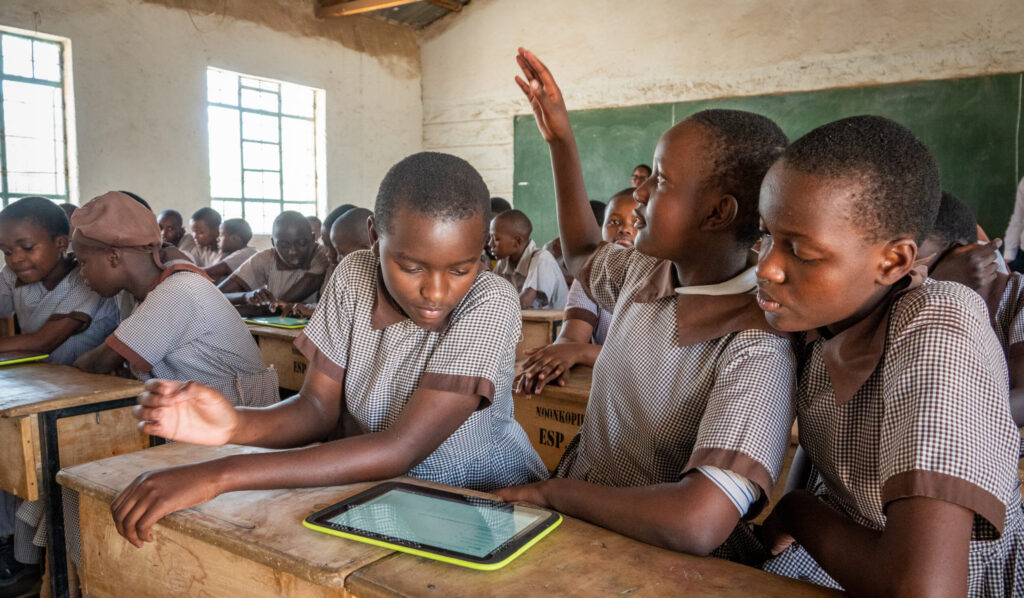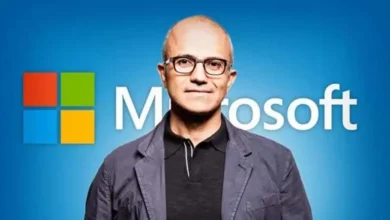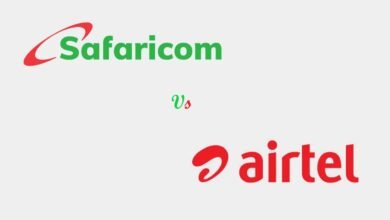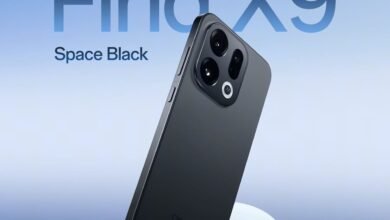In recent years, digital access has become a fundamental requirement for equitable education and community development. At the forefront of advancing digital inclusion in Kenya is a powerful partnership between Ericsson and UNICEF under the Giga initiative, which aims to connect every school worldwide to the internet by 2030. This initiative has already made significant strides in Kenya, where over 340,000 students and teachers have gained access to online resources, digital skills, and broader opportunities through the program.
As Techish Kenya delves into this critical collaboration, we chat with Todd Ashton, Vice President and Head of Customer Unit South and East Africa at Ericsson, and Charles Otine, Innovation Manager at UNICEF Kenya to capture their insights. The discussion illuminates the progress, challenges, and impact of connecting Kenyan schools, especially in underserved areas.
How School Connectivity Drives Community Development
The ripple effects of school connectivity extend beyond educational benefits. Ericsson’s Todd Ashton emphasized how school connectivity transforms not only students’ lives but also the surrounding communities and local economies. According to the Economist Intelligence Unit report “Connecting Learners: Narrowing the Educational Divide,” a 10% increase in school connectivity in the least connected countries can enhance years of schooling by 0.6% and GDP per capita by 1.1%. This data underscores the broader impact of digital inclusion on societal well-being.
Through internet access, teachers and students gain a wealth of information, digital tools, and remote learning resources, bridging the divide between urban and rural areas. Schools also serve as anchor points in communities, often hosting local gatherings, voting events, and, in crises, providing shelter. Connected schools become hubs where community members can access digital resources, fostering local entrepreneurship, improving access to online banking, and connecting people to job opportunities through digital platforms.

Ericsson’s Financial and In-Kind Contributions to Giga in Kenya
Ericsson has committed both funding and in-kind expertise to support Giga’s mission. As the first private-sector partner in 2020, Ericsson provided multimillion-dollar funding and technical assistance, helping Giga grow in its foundational stages. Their contributions have enabled Giga to map schools, assess connectivity costs, develop infrastructure models, and build essential partnerships with governments and private sector operators. By end of 2023, 546 schools across Kenya are now connected to the internet, marking a substantial milestone in the digital inclusion journey.
Charles Otine from UNICEF Kenya highlighted that, as of 2020, more than half of Kenya’s schools lacked internet access, with only 25.7% of primary and 34% of secondary schools connected. Through Ericsson’s support, Giga has accelerated its work in Kenya, focusing on school mapping, partnership formation, and resource mobilization for connectivity infrastructure.
Beyond financial support, Ericsson has provided in-kind expertise in connectivity, experience with mobile service provider data, and data science analytics. This combination has been instrumental in mapping and understanding the connectivity needs of schools, enabling Giga and UNICEF to set data-driven foundations for long-term digital inclusion.
Ensuring Long-Term Sustainability of Internet Access in Kenyan Schools
A key question for the longevity of school connectivity projects is sustainability. Giga and UNICEF have worked closely with the Kenyan government and other local stakeholders to create frameworks for maintaining long-term connectivity. By leveraging Kenya’s National Broadband Strategy and digital infrastructure, the initiative aims to keep connectivity costs low. UNICEF has advocated for capitation funds to subsidize recurring connectivity expenses, and government departments are increasingly using connected schools as digital resource hubs, ensuring continued local engagement and support.
As part of this strategy, connected schools in Kenya are set to receive internet speeds of at least 10 Mbps for downloads and 5 Mbps for uploads. These speed targets align with Giga’s recommendations for meaningful school connectivity and reflect Kenya’s National Broadband Strategy.
As Ericsson’s Todd Ashton explains, their support for Giga also includes providing critical data insights, which aid in monitoring connectivity needs and optimizing network deployment. This data-driven approach enables the initiative to address connectivity gaps and improve network reliability in underserved regions.
Transforming Learning at Amani and Kwashee Comprehensive Schools
In Kenya, Ericsson has supported various schools through both technological infrastructure and digital learning tools. Recently, a visit to the Amani Comprehensive School in Mombasa highlighted the transformative power of connectivity in education. With a student population of over 2,000, Amani has benefitted from 100 functional tablets and a projector, which have revolutionized classroom experiences. Teachers and students now have access to digital learning materials that were previously out of reach, effectively bridging the digital divide.
At Kwashee Comprehensive School, also in Mombasa, over 1,162 students are similarly empowered with 40 functional tablets and a projector. The school’s ICT club, which now includes over 70 students, enables hands-on experience in digital learning, fostering digital literacy skills from an early age. Both schools are connected to Airtel’s network, a key Ericsson customer in the region, demonstrating how public-private partnerships can bring meaningful technology access to students.
The Role of the Daily Check App in Monitoring Connectivity
The Daily Check App, developed through Ericsson’s technical partnership with Giga, provides an innovative solution to monitor internet service quality in schools. Installed at schools to report connectivity status, this app is now in use across 21 countries and is being piloted in Kenya.
Real-time data from the app enables better tracking of internet availability, allowing Ericsson and Giga to troubleshoot issues promptly and improve overall connectivity. This tool will scale to support Kenya’s last-mile connectivity push, aiming to connect an additional 1,000 schools over the next three years.
Addressing Connectivity Challenges in Kenya’s Schools
Kenya’s schools, especially in rural areas, face significant connectivity challenges, from high costs to limited infrastructure and electricity shortages. Only 25.7% of primary schools and 34% of secondary schools in Kenya had internet connectivity by 2020, highlighting the digital divide between urban and rural regions.
To overcome these obstacles, Ericsson utilizes solutions like Fixed Wireless Access (FWA) technology to deliver broadband via existing 4G and 5G networks. FWA provides a cost-effective solution for remote areas, bridging connectivity gaps quickly and affordably. Ericsson’s expertise in radio and networking technology also contributes to a robust digital infrastructure, enabling broader access to educational and economic opportunities.
The Importance of Public-Private Collaboration in Digital Inclusion
Ericsson’s and UNICEF’s commitment to the Giga initiative aligns closely with the United Nations Sustainable Development Goals (SDGs), aiming to make transformative progress through public-private collaboration. The challenges posed by the digital divide require robust and innovative partnerships; no single entity can bridge the gap alone.
Todd Ashton from Ericsson underscored the importance of such collaborations, noting, “Digital technologies are dramatically transforming our world, and solutions to the digital divide rest on a foundation of network infrastructure and connectivity.”
This shared mission illustrates how partnerships like that of Ericsson and UNICEF are essential to ensure sustainable, meaningful connectivity that impacts both students and the communities around them.
Progress in Global School Connectivity Through Giga
Since 2019, Giga has made substantial progress in mapping and connecting schools worldwide. With the support of Ericsson and other partners, the initiative has mapped more than 2.1 million schools and connected over 14,500, impacting over 7.79 million students. In Kenya, 546 schools are now online, providing internet access to over 340,000 students and teachers, a testament to Giga’s commitment to advancing educational equity.
Conclusion
The partnership between Ericsson, UNICEF, and local stakeholders in Kenya exemplifies the transformative power of public-private collaboration in addressing the digital divide. By connecting schools, communities, and creating pathways for digital literacy, Giga and its partners are setting the stage for educational and economic advancement across Kenya.
The long-term impact of these efforts will not only bridge gaps in education but also lay a foundation for economic growth, innovation, and social progress, as Kenya works towards a more connected and equitable digital future.
The journey ahead is ambitious but promising. With Ericsson’s continued support, Giga’s commitment, and Kenya’s national strategy, digital inclusion can become a reality for all students, creating opportunities that will shape the nation for generations to come.








